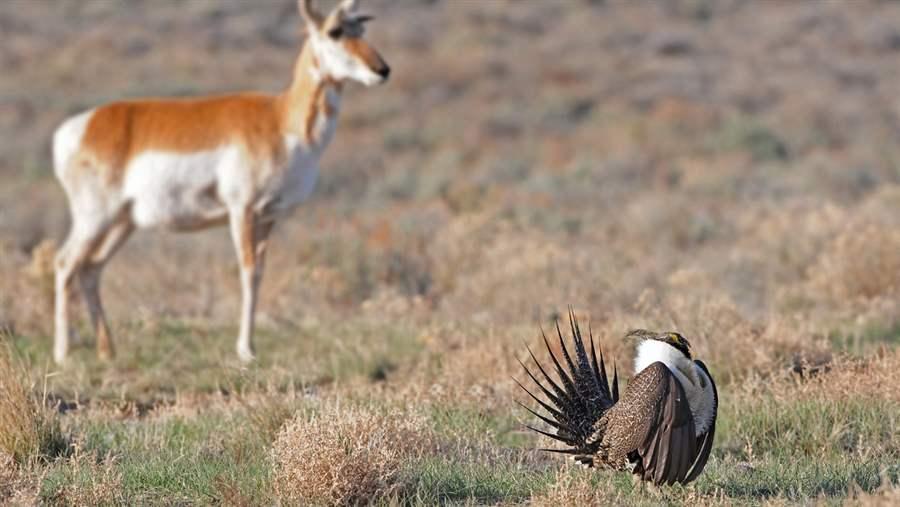With Sage-Grouse Policy Under Threat, Americans Must Speak Up
Interior Department could upend agreement affecting 50 million acres of Western land

The Greater Sage Grouse is an indicator species for the health of the sagebrush habitat – home to more than 350 species.
© Jennifer HallWith more than half of the American West’s sagebrush lands lost to development, wildfire, and invasive species—a loss that has driven a 95 percent reduction in greater sage-grouse populations—now is not the time to roll back protections for the vital ecosystem or the iconic bird.
Yet that is what the Department of the Interior appears determined to do. On Oct. 11, the agency published a notice of intent to solicit public comments to potentially revise sage-grouse management plans implemented in 2015 after a decade of public input, and negotiations and compromise among a wide range of stakeholders. These rules, which have barely begun to take effect, were based on the best available science and balanced energy development, recreation, grazing, and other activities on more than 50 million acres of public lands across the West.
Importantly, the plans had helped federal agencies avoid the need to list the sage-grouse as a threatened or endangered species—a move that could have triggered more restrictive land use policies across the region.
The sage-grouse plans resulted from collaboration among sportsmen, local business owners, governors and other elected officials, conservationists, and representatives from numerous industries, including oil and gas companies. The goals of the compromise included protecting sagebrush landscapes, preserving the Western way of life, and sustaining the region’s vibrant outdoor economy, which generates more than $1 billion in economic output annually.
The 2015 rule also drew strong support from residents of rural counties containing sage-grouse habitat. Those sagebrush lands also support 350 other species, including mule deer, elk, pronghorn antelope, and golden eagles. For all of these reasons, leaders from across the region are expressing concern about potential changes to the sage-grouse management plans.
Wyoming Governor Matt Mead (R) said in late September: “We can’t have wholesale changes in wildlife management every four or eight years. I don’t think that is the best way to sustain populations or provide the necessary predictability to industry and business in our states.”
In May, Mead and Colorado Governor John Hickenlooper (D) sent a letter to Interior Secretary Ryan Zinke warning against an overhaul of the plans.
And Jim Magagna, executive vice president of the Wyoming Stock Growers Association, was paraphrased recently in the Casper Star-Tribune as saying that he understands the fears of environmental groups but that no one in the grazing world wants to go too far in unraveling the 2015 plans.
As Brian Rutledge of the Audubon Society told The New York Times, “A move to amend the plans would be pulling the rug out from under literally hundreds of Western stakeholders from all parts of the political spectrum who came together to protect an entire ecosystem.”
Thousands of Americans spoke up and submitted comments to bring about these landmark plans, and Pew is now asking for your help again to protect the largest conservation achievement in the Bureau of Land Management’s history. Please send Secretary Zinke a comment today.
Ken Rait directs The Pew Charitable Trusts’ western lands initiative.










